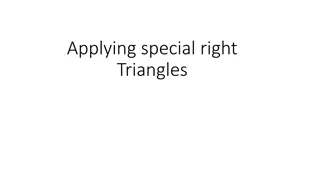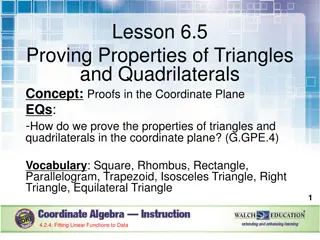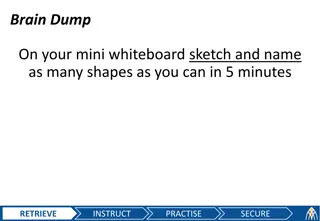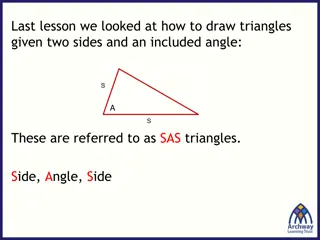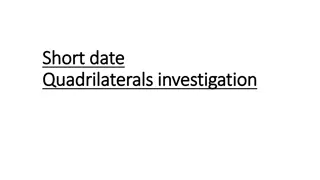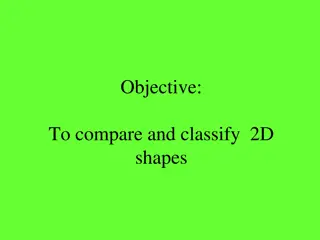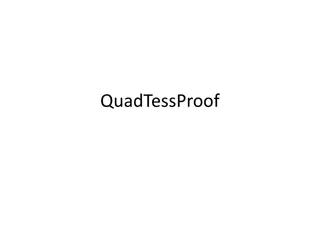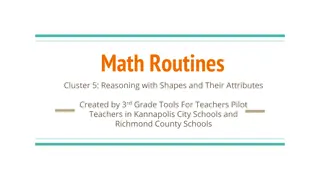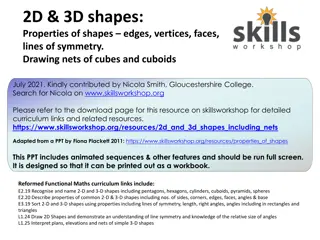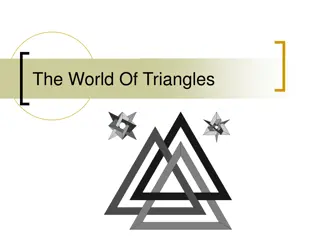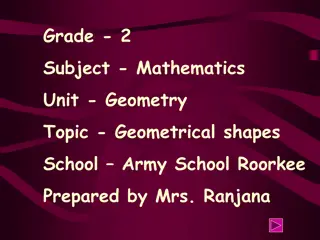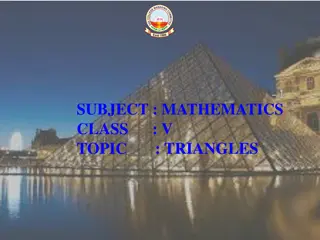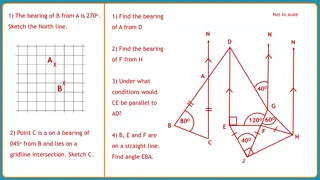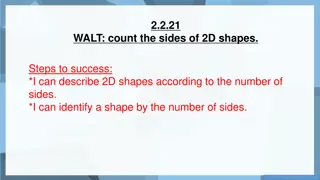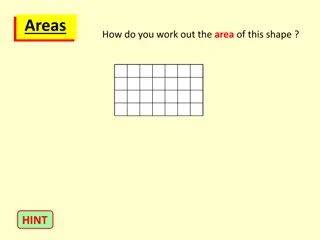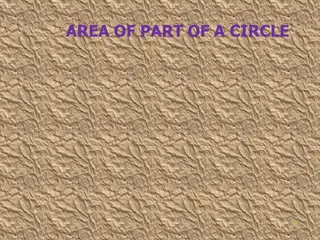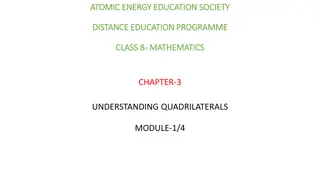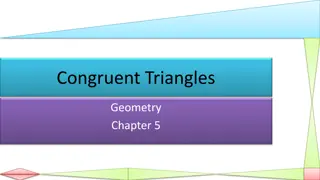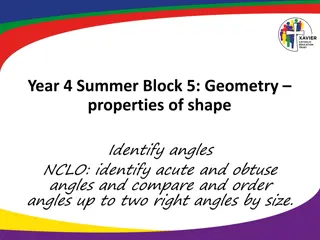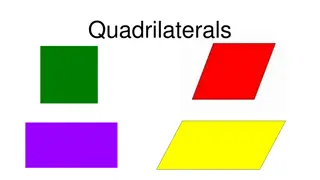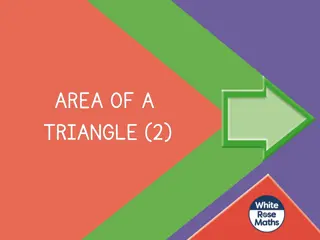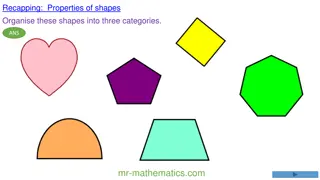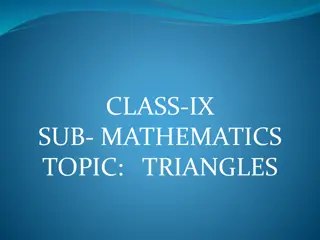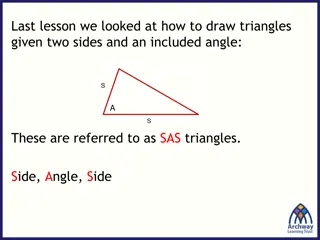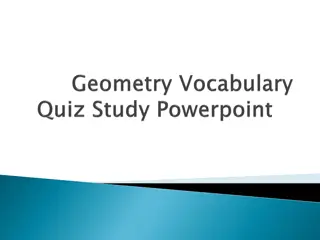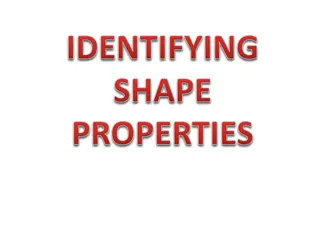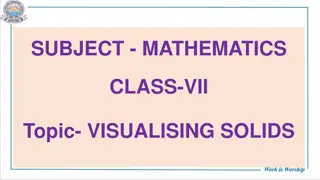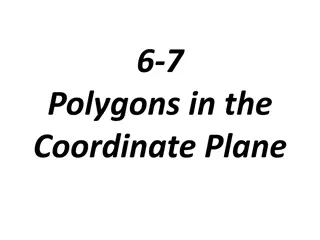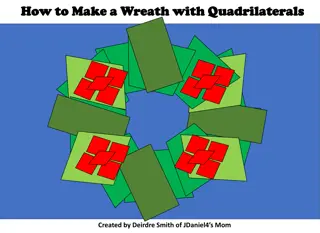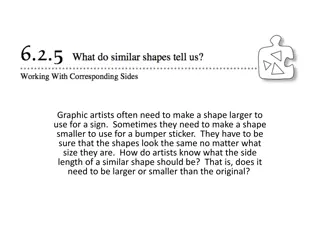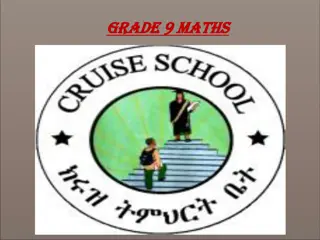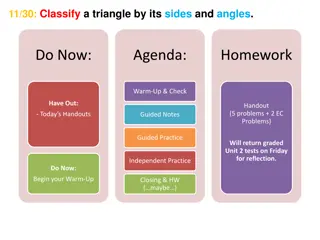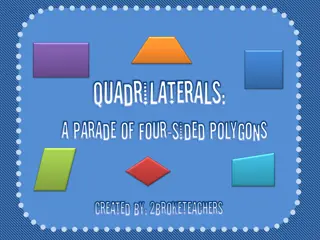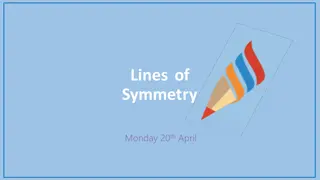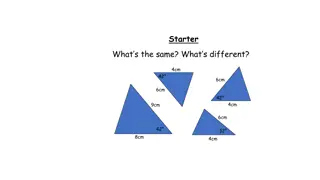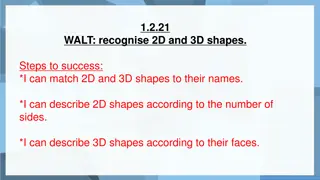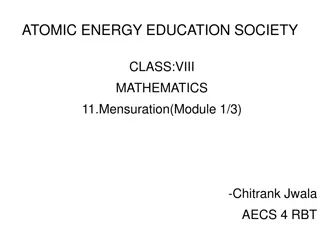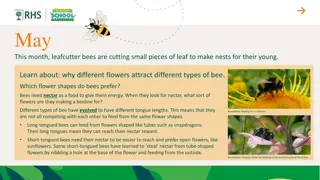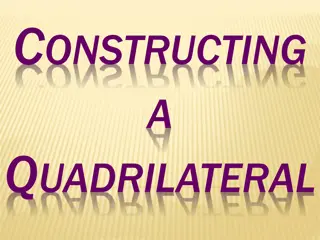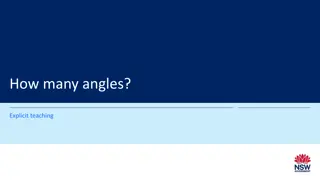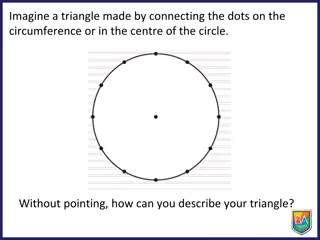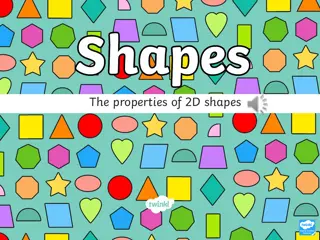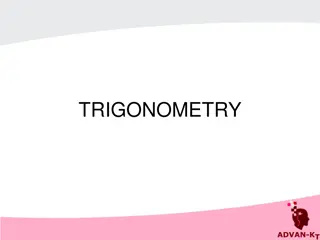Exploring Properties of Shapes: Triangles and Quadrilaterals
Delve into the properties of shapes like triangles and quadrilaterals to uncover missing angles, identify types of triangles, and compare various quadrilateral shapes. Enhance your understanding of angles, opposite angles, and angles within shapes to solve geometric puzzles and problems effectively.
Download Presentation

Please find below an Image/Link to download the presentation.
The content on the website is provided AS IS for your information and personal use only. It may not be sold, licensed, or shared on other websites without obtaining consent from the author. Download presentation by click this link. If you encounter any issues during the download, it is possible that the publisher has removed the file from their server.
E N D
Presentation Transcript
Year 6 Summer Block 1 Properties of shapes NCLO: To find missing angles in a triangle
Key vocabulary and questions Can we identify the type of triangle? How will this help us calculate the missing angle? What do you already know about the angles in a triangle?
Year 6 Summer Block 1 Properties of shapes NCLO: To find missing internal angles in a quadrilateral.
Key vocabulary and questions What is the same and different between a rectangle and a parallelogram? What do you notice about the opposite angles in a parallelogram? What is the same and different between a square and a rhombus? What do you notice about the opposite angles in a rhombus? What is the difference between a trapezium and an isosceles trapezium? If you know 3 of the internal angles, how could you work out the fourth angle?
Year 6 Summer Block 1 Properties of shapes NCLO: To find interior angles in polygons
Key vocabulary and questions What does it mean if a polygon is regular? What does it mean if a polygon is irregular? What do the sum of angles in a triangle always equal? How can we use this to work out the interior angles of regular polygons?
Year 6 Summer Block 1 Properties of shapes NCLO: To accurately draw shapes when given their properties.
Key vocabulary and questions What do you know about the shapes which will help you draw them? How can we ensure our measurements are accurate? How would you draw a triangle on a plain piece of paper using a protractor?
Year 6 Summer Block 1 Properties of shapes NCLO: To identify 3D shapes from their nets.
Key vocabulary and questions What two-dimensional shapes can you see in three-dimensional shapes? What is a net?


